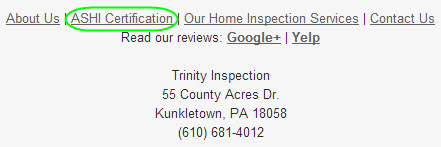You can’t make big or technical changes to your site, for whatever reason. (Maybe you just aren’t sure how.) Your options may be limited, but you still want to start ranking in Google Places and elsewhere.
Maybe your webmaster pulled a Houdini on you. Or selfishly went belly-up at just the wrong time (before you’re ranking top-7).
Or maybe you are your own webmaster, but don’t think you can take your site apart and make it whole again.
There’s still plenty you can do to make your site local-search-friendly.
After my last post – which was a little technical – I thought it was time for something lower-tech. Here, my suggestions would have made sense for you to do 10 years ago, and they’ll benefit you 10 years from now. Many of them I’ve mentioned before.
You only need to be able to make basic changes to your pages. You should be able to implement these suggestions whether you’re using WordPress, a hand-coded site, one of GoDaddy’s contraptions, or any other “website builder.”
Here are the low-tech local SEO steps I suggest you take on your site:
Structure
1. Create a page for every specific service you offer.

2. Create a page for each location, if you have more than one location. (Don’t necessarily use these as your Google Places landing pages.)
3. Create the other pages you should create.
Content
4. Make sure your homepage at least mentions your specific services.
5. Add old-school driving / walking / public-transportation directions.

6. Describe some local landmarks.
7. Go through every page of your site and see if you can explain your services better.
8. Describe your qualifications, certifications, etc. If applicable, also link to them.

9. Describe your service area. (Notice I said “describe” it. Don’t just paste in all the city names in a paragraph that’s taller than Shaq.)
10. Rework crappy blog posts.
11. Remove or rewrite duplicate content.
Details
12. Put your business’s “NAP” (name, address, phone) info on every page. No, it doesn’t need to be in Schema. (Some guidelines here.)
13. Add links to your subpages – particularly pages where you describe specific services – where appropriate. Do not overdo this. Only add links when you realize, “Gee, maybe a visitor would want to know more about this point.”
14. Add links to sites where customers have reviewed you.

Maybe also create a “Review Us” page with those links on it.
15. Add photos. Name them relevantly, and make sure they’re relevant to whatever you’re describing on the page.
16. Read your content out-loud. Take note of any areas that sound clunky. I’ll bet you a beer they’re links with keywords awkwardly inserted. Remove or rephrase those links.
—
Even if you nail the low-tech stuff, your site may still need work. But you’ll be in much better shape.
How many of these fixes have you crossed off the to-do list?
Any non-technical suggestions you’d add?
Leave a comment!